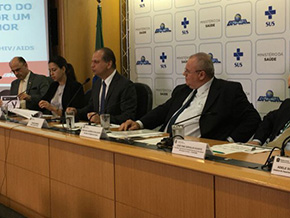Option is for new patients and for those who are resistant to other drugs.
+Learn how to have more powerful sex with Male Pompoarism
O Ministry of Health reported this Wednesday (28) that new patients undergoing treatment against HIV and AIDS will receive a different medicine than those available today. The ministry estimates that around 100 patients will begin treatment against the disease using the new medicine from 2017.
According to the ministry, it was possible to get a 70,5% discount on the purchase of dolutegravir, an antiretroviral. Prices fell from US$5,10 to US$1,50, the ministry declared. “We are offering this treatment without budgetary impact,” said ministry director Adele Benzaken. The budget for purchasing such medicines is R$1,1 billion.
In addition to patients who are not yet taking HIV treatment, patients who are resistant to current medications, which corresponds to 17 thousand people, will also benefit from the medicine.
What it is like today and what it will be like
Today, patients with AIDS and HIV use three medicines available in the SUS — tenofovir, lamivudine and efavirenz — a combination known as "three in one".
From 2017 onwards, the indication will be dolutegravir associated with the "two in one" (tenofovir + lamivudine). In other words, dolutegravir will replace efavirenz. According to the ministry, dolutegravir is considered “the best treatment” for these cases.
“The current treatment is three in one, which brings some extremely uncomfortable side effects for a certain percentage of people. This effect occurs at the beginning of treatment,” said Adele, referring to cases of hallucinations or depression. “People who take three in one and who have no side effects and are doing very well, have no reason to make this change.”
According to Adele, the fact that dolutegravir will not be indicated for all patients, only for those who have not yet started treatment and those who are resistant to the previous regimen – is due to a limitation of the company itself in producing the drug. "We are purchasing 40 million tablets. Delivery will not be immediate. It will start in January and is gradual. That is why we cannot include everyone in treatment”, continued the director.
According to data from the ministry, between 2005 and 2016, the total number of Brazilians undergoing treatment increased from 165 thousand to 483 thousand. From the beginning of the year until August, 48 thousand patients started treatment.
Between 1980 and June 2015, Brazil registered 798.366 cases of people with HIV. In the period between 2010 and 2014, 40,6 thousand cases were confirmed on average. The mortality rate fell by 10,9% in recent years, from 6,4 per 100 thousand inhabitants in 2003 to 5,7 per 100 thousand inhabitants in 2014.



